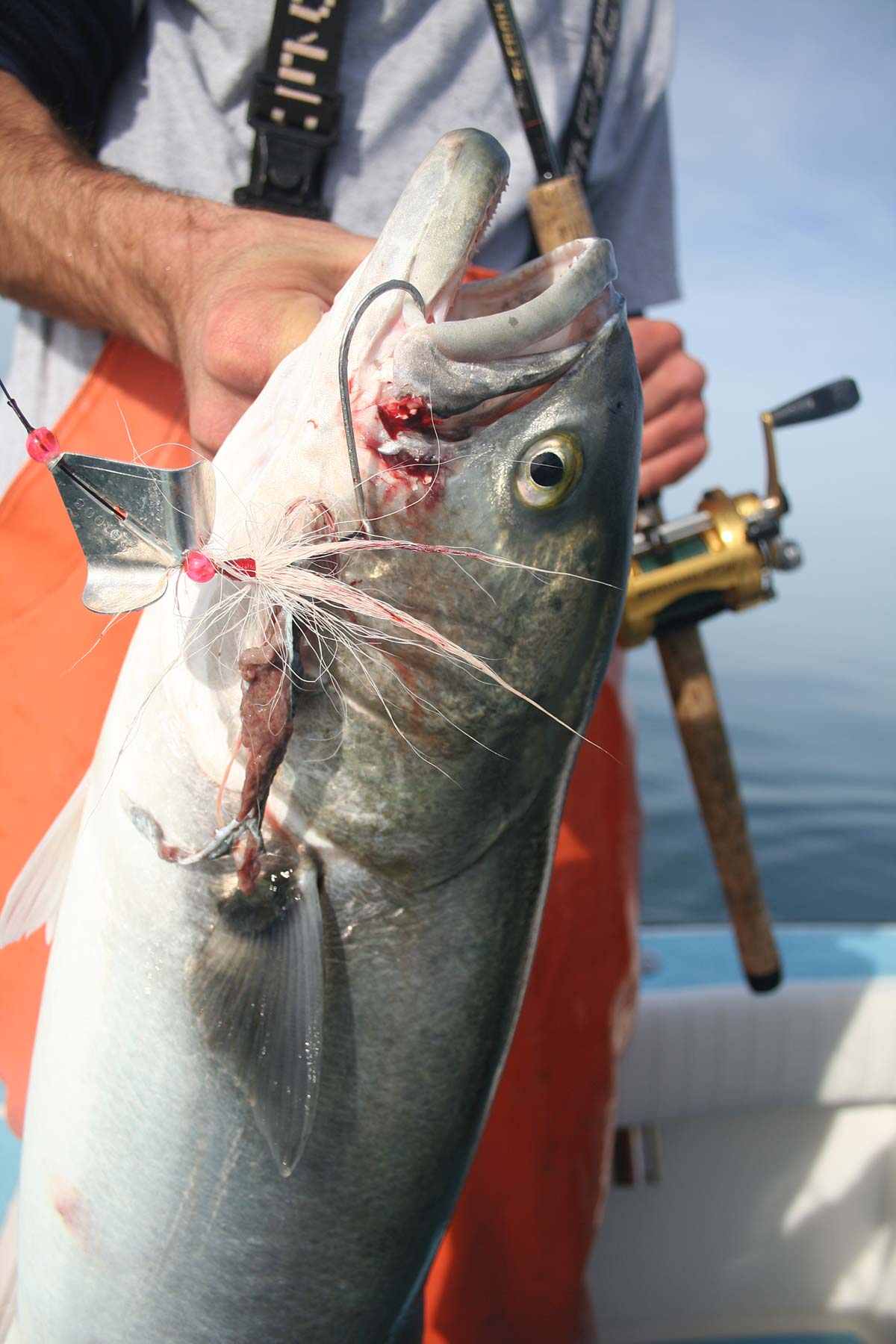
From within the inlet on out to the deep, ‘IRI’ offers plenty of fall action.
As fall weather cools the ocean water and the fish begin to feed for the winter migration, anglers can count on some excellent action out of Indian River Inlet, Delaware. No matter if you enjoy bottom fishing for sea bass and flounder or trolling for blues and false albacore, there will be plenty of both for you to catch.
False albacore and blues will run as close in as the surf line chasing mullet and rainfish in explosive attacks that will get any angler’s heart beating fast. When you spot this action break out the light tackle casting gear. Long, thin metal lures work best because they imitate the bait fish and cast long and true. Watch the birds, not the fish. You must cast where the albies are going, not where they are. Once the cast is made, crank the lure back as fast as you can and have the drag set on the soft side so the hit does not snap the line.
That first run will be a screamer, but each run will become less and less until the fish comes to the boat. I personally do not find albacore fit to eat, but some cultures find them excellent. I had a friend in Virginia Beach who was married to a Pilipino lady. We went out on a trip and caught and released a half-dozen albies. He caught all kinds of heck at home because she and her family and friends happened to love false albacore.
If you don’t see the fish breaking, set out a couple of rods for trolling. Nothing fancy. Twenty-pound class with white bucktails or small Drone or Clark spoons behind 1- or 2-ounce torpedo sinkers or #1 or #2 planers. If the surf line proves unproductive, go down to Fenwick Shoal and troll around the wrecks.
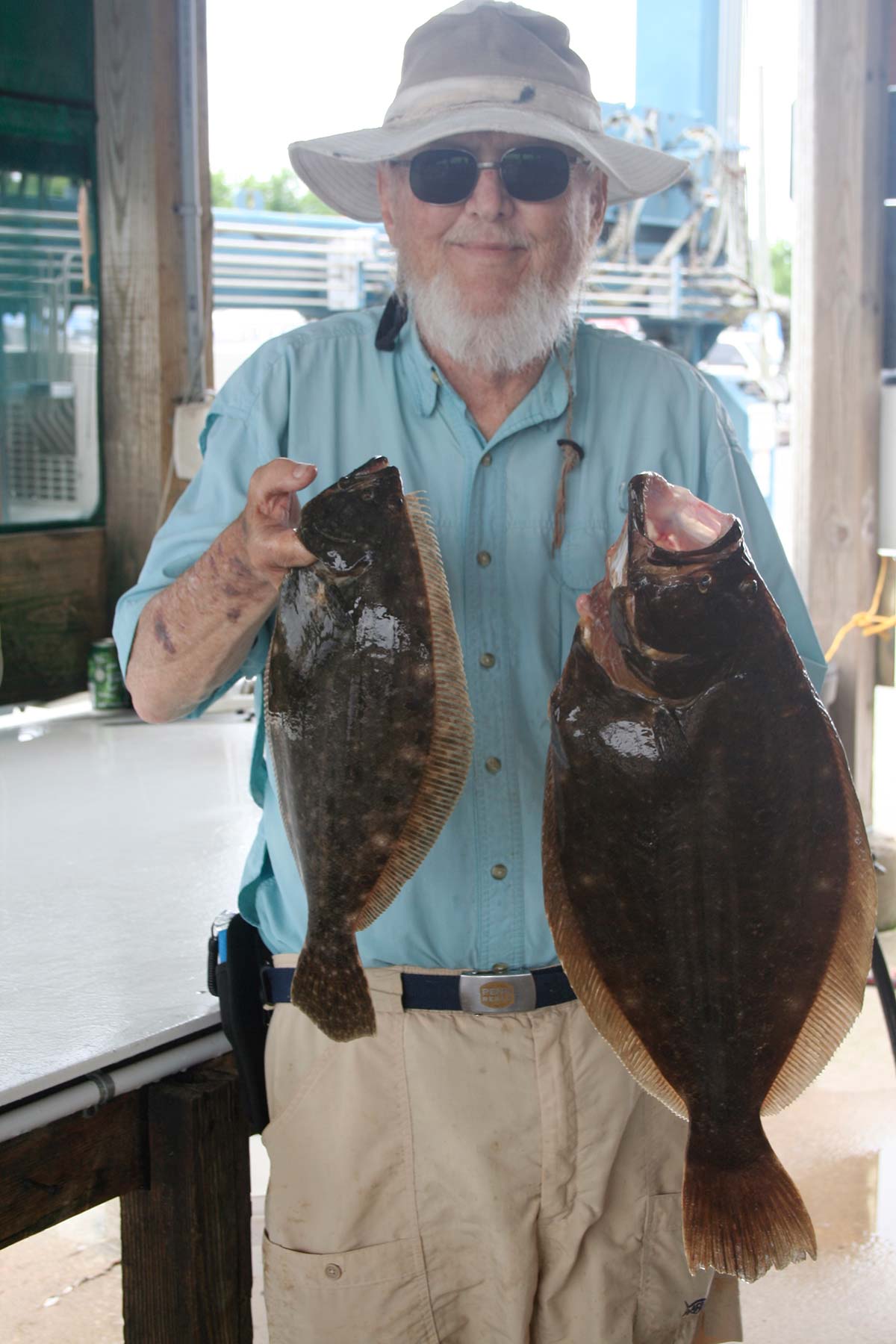
Croaker Canyon
There can be good bottom fishing just outside the inlet. There is a hole alongside the red can buoy that may hold kings and croakers. If not, you can move just a bit further off to the north and fish the world-famous Croaker Canyon. Back when I thought anyone fishing inside the 30-Fathom Line was wasting time, I named this spot the Croaker Canyon so when I fished there, I could say I was still fishing in the canyon.
This spot is especially productive in the fall as croaker, trout and flounder hold there for reasons I do not understand. It is directly in front of the old Coast Guard Station about two miles offshore. Your SONAR should light up when you are in the right place. Just drop down with a top-bottom rig baited with bloodworms, Fishbites, clam, squid, Gulp or a small bucktail with a minnow and you should be in business.
A little further north is Reef Site 9. I will tell you the truth, I have never caught a fish there. You are welcome to give it a try and I wish you the best of luck. Reef Site 10 is a bit further east from the inlet and I have caught a lot of fish there. So have a lot of people. It can get covered up with boats, but in the fall, there are fewer boats as football and school take many fishermen off the water.
In spite of the fishing pressure, some big summer flounder are caught here. Bucktails with Gulp or minnows with a strip of squid seem to be the hot baits. A live spot can’t be beat if your target is a big flounder. I have also caught big croaker here on bloodworms and Fishbites. This year I would not be surprised to see some big trout (weakfish) come off this reef site.
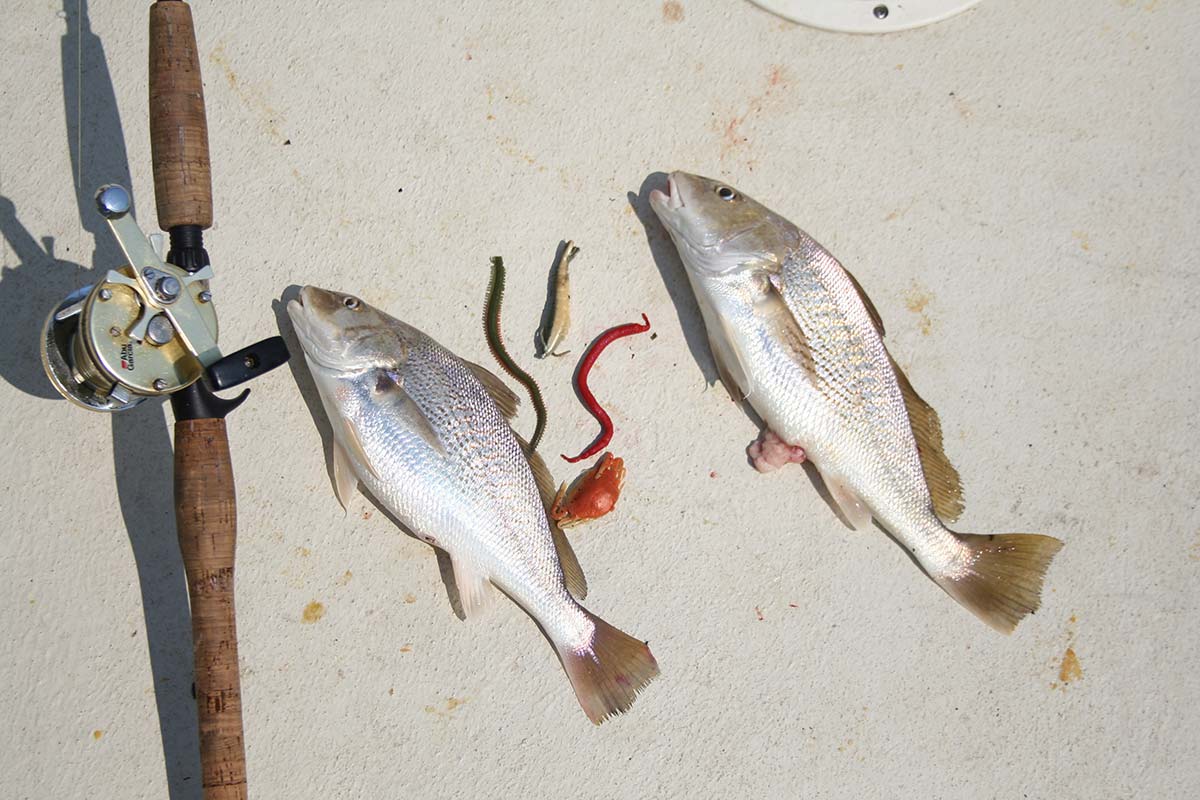
The Old Grounds
The next area you will come to is known as the Old Grounds. It is roughly between B and A buoys, but also covers areas west of A buoy and east of B buoy. Back in the day it was a location where commercial fishermen put their sea bass pots. The pot strings were marked with flags and we recreational fishermen called the area the “flags”. We trolled here with Hoochie Trolls for big bluefish. Thanks to warming ocean waters, the sea bass and the bass pots are now further off shore.
| #10 – BY THE NUMBERS |
| Using the following LAT/LON numbers for Reef Site #10, you’ll find large deposits of concrete as well as deployed boats and cables making up quality structure maintained by Delaware’s Department of Natural Resources and Environmental Control (DNREC)
Reef Site 10 Steel Barge Southern Sword 38° 36.769’N / 74° 56.878’W Fuel Oil Barge 38° 36.424’N / 74° 56 498’W 5.6 Miles Cable 38° 36.750’N / 74° 55.670’W Mr. G & Rusty Pusher 38° 36.649’N / 74° 56.645’W Navy Barge 38° 36.608’N / 74° 56.494’W 95’ Barge 38° 36 608’N / 74° 56.494’W |
The Old Grounds is covered with rocks; some think that sailing ships dropped their ballast here while others think that the rocks were deposited by melting glaciers. However they got here, they make for good, live bottom that attracts things that flounder like to eat. I run 113 for 30 minutes at 25 knots and that puts me somewhere in the middle of the Old Grounds. From there I set my drift according to the wind and current. I will try to cover as many drop-offs as I can and look for any change in the bottom I can find. Some days the drift is lousy. You can try to use your motor or trolling motor and make your own drift, but that takes a lot of practice.
The next reef site is #11. This is the one that got most of the New York subway cars. Just about anything that swims can be found here. Flounder, tog, triggerfish, blues, mackerel, false albacore, sea bass and conger eels. In the fall you are likely to find all of these and more. Keeping in mind that Delaware’s summer flounder season never closes, I have found using Gulp on a bucktail will attract pretty much most of the fish I want to catch including flounder, sea bass, bluefish and weakfish. I just drop it down on the reef site and bounce it on the bottom. The size of the bait will cull out the little fish and the colors of the bucktail and the Gulp! seem to attract fish to the bait.
When smaller fish like croaker and spot are the target, I go to Fishbites on a top-bottom rig. Both species gobble the Fishbites bloodworm up just as fast as they would the real thing.
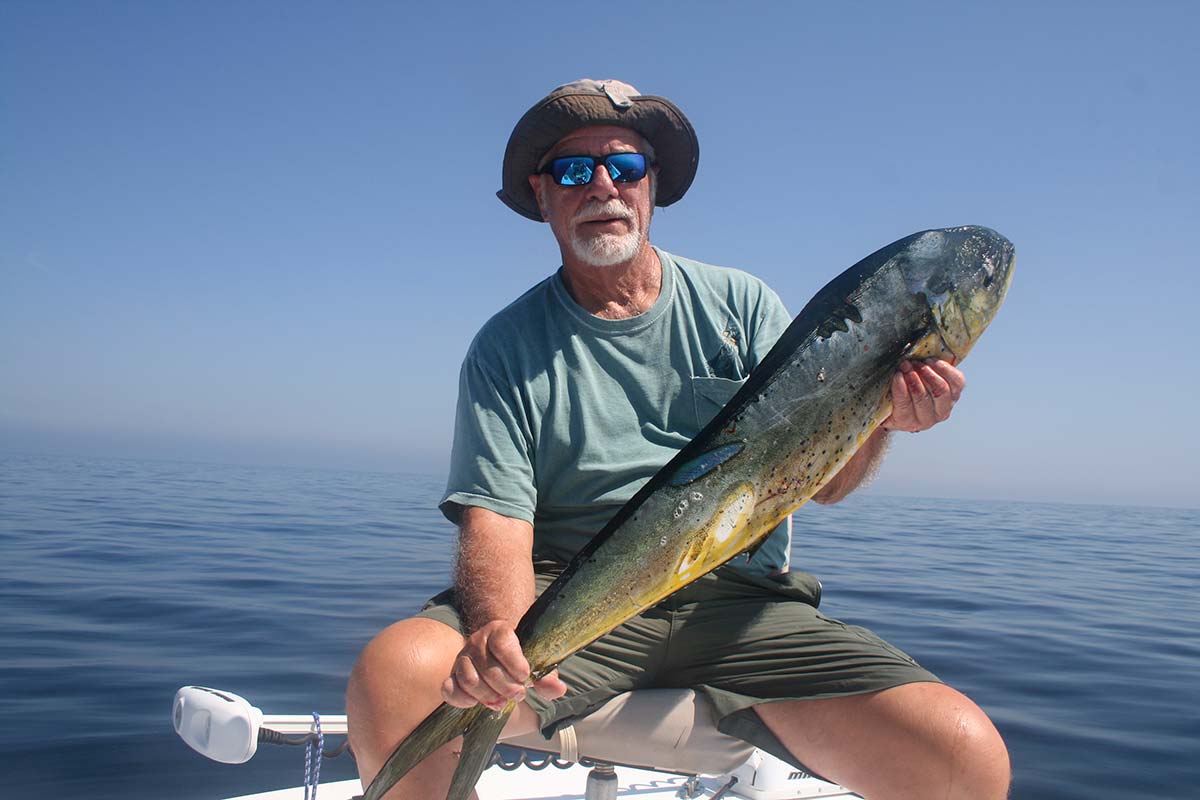
Del-Jersey-Land Reef
The final reef site is the Del-Jersey-Land reef. This is a big site with several large ships including the USS Radford and the Cape May Lewes Ferry, Twin Capes. In addition, there are four menhaden fishing boats, a 205-foot Navy tug and 288 New York subway cars. It is 26 miles out of Indian River so plan on an hour’s ride at 25 knots.
Most of my trips here have been for sea bass. On one trip in late August, we marked sea bass by the thousands on the bottom, but none would bite. I had brought along a minnow bucket with several dozen live minnows to try to fish for dolphin. I rigged up one minnow with a single circle hook through the lips and cast it out with my spinning rod. Pretty soon the rod bent double and I cranked and 3- or 4-pound dolphin. Larry Weldin made the next cast and hooked a 15-pounder. The next dolphin was a match to my first one and then Larry, who owned the boat, decided to troll. We didn’t catch any more dolphin.
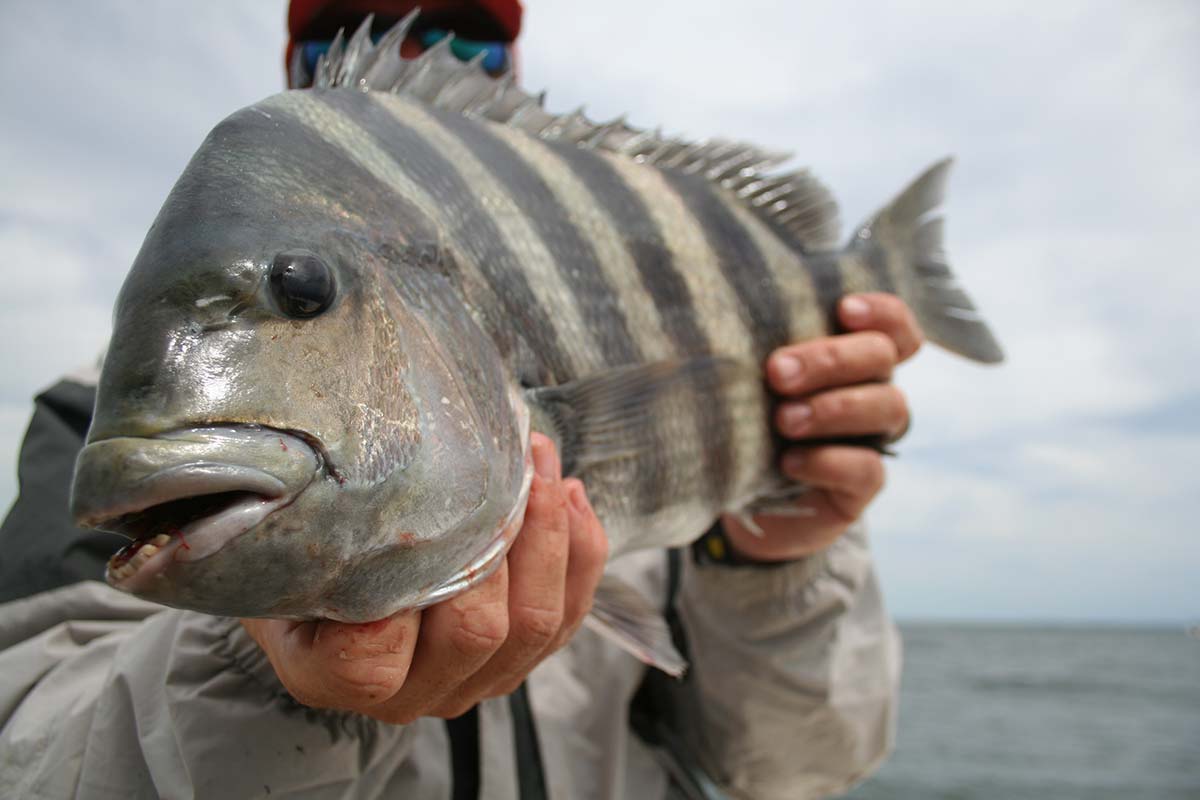
Late fall is a prime time to catch both sea bass and flounder here. I fished the Del-Jersey-Land with my two sons the Friday after Thanksgiving two years ago and we had our 15 sea bass limit before lunch. We had been using salted clam supplied by the head boat and after lunch the boys switched to jigs. I stayed with the clams. We continued to catch keepers that we shared with others that had not filled their limit.
On a more recent trip, several anglers were fishing for just flounder using bucktails with Gulp teasers. They only caught a few, but the ones they caught were nice, up to 6 pounds. They also caught as few big sea bass.
| DELAWARE LICENSE |
| Delaware has a General Fishing License that covers fresh and saltwater fishing as well as clamming and crabbing. The cost is $8.50 for residents and $20.00 for non-residents. There is a $12.50, 7-day license available for non-residents. For details go to dnrec.delaware.gov. |
I have never tried trolling here, except for the unproductive dolphin experiment; however, in the fall I would expect to catch albacore and perhaps a king mackerel. Big blues have been around this year and they might show up here as well. If you have a sea bass or two come up bit in half, that would be a sure sign that there are big blues around. Start with a jig worked from the bottom up and if that doesn’t work try trolling or casting with a plug. I would begin with a surface plug because I love to see a big bluefish bust on top.
The only thing that can mess up fall fishing is a nasty hurricane. Nothing we can do about that, just keep fishing and hope for the best.




